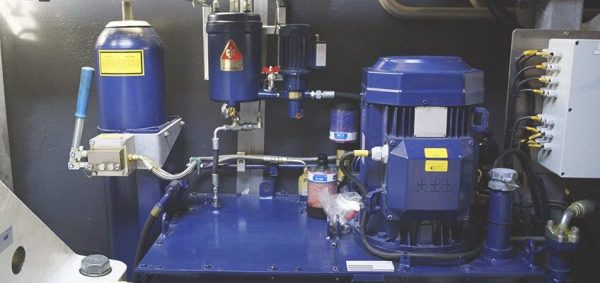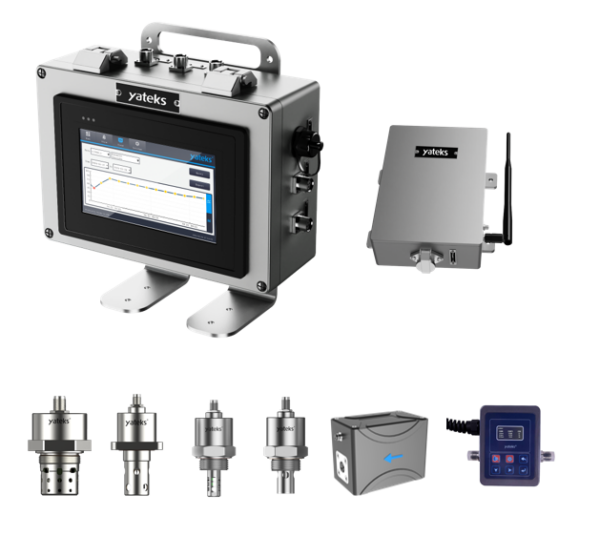Hydraulic systems play a crucial role in various mechanical equipment, where their stability and efficiency directly impact operational performance and equipment longevity. One common failure in hydraulic systems is internal leakage, which refers to the loss of hydraulic fluid within the system without any visible external leakage. This internal leakage not only diminishes system efficiency but can also lead to overheating, increased wear and tear on components, and even catastrophic equipment failure. Therefore, it is essential to understand the causes of internal leakage in hydraulic systems and implement appropriate preventive measures to enhance system stability and prolong service life.
-
Causes of Internal Leakage in Hydraulic Systems
Internal leakage can stem from several factors, with the following being the primary causes:
(1) Fluid Contamination
Contamination is one of the leading causes of internal leakage in hydraulic systems. Solid particles, impurities, or water present in the hydraulic fluid can lead to wear and tear on hydraulic components, particularly seals. As seal performance deteriorates due to contamination, the hydraulic fluid can leak through the sealing areas, resulting in internal leakage. Common sources of contamination include airborne dust, moisture, aging of the system, and improper operation.
(2) High Temperature
The operating temperature of the hydraulic fluid significantly affects its viscosity and lubrication properties. When hydraulic oil temperatures rise excessively, the viscosity decreases, resulting in thinner oil films and diminished lubrication effectiveness. This increased wear on hydraulic components further diminishes sealing performance, leading to internal leakage. High temperatures can arise from factors such as excessive loads, failures in the cooling system, or poor oil quality.
(3) Seal Failure
The quality, design, installation, and usage of seals are critical to the sealing effectiveness of hydraulic systems. Common seal failure issues include:
Subpar Quality: Using seals that do not meet specifications, or seals that have aged, hardened, or deformed can lead to failures.
Poor Design: Seals designed inadequately for the hydraulic system’s work environment may not provide sufficient sealing pressure.
Excessive Wear or Swelling: Over time, seals can stretch excessively, wear down, or swell due to chemical interactions with the hydraulic fluid, compromising their sealing ability.
(4) Piping Issues
Piping in hydraulic systems serves as the primary conduit for fluid transmission, and any design or installation flaws can affect system sealing. Common piping problems include:
Insufficient Bending Radius: A radius that is too small can impair oil flow and increase pressure fluctuations, leading to internal leakage at joints or seals.
Inferior Quality: Utilizing low-quality piping materials or those not conforming to design specifications can heighten leak risks.
Improper Installation: Poorly installed or unsealed piping joints can result in internal leakage.
-
How to Prevent Internal Leakage in Hydraulic Systems
To mitigate the causes of internal leakage in hydraulic systems, the following practical preventive measures can be implemented:
(1) Enhance Hydraulic Fluid Maintenance for Cleanliness
Maintaining the cleanliness of hydraulic fluid is crucial for the proper functioning of hydraulic systems. Contaminants, especially solid particles and moisture, can lead to component wear and subsequent seal failure, causing internal leakage. Regular monitoring and replacement of hydraulic fluids are essential. Specific actions include:
Strictly controlling hydraulic oil cleanliness and utilizing appropriate filters and purification systems to minimize contaminant intrusion.
Regularly sampling and monitoring oil contamination levels, purifying or replacing oil when contamination exceeds standards.
Ensuring that the storage environment for hydraulic oil remains dry to prevent contamination.
(2) Control Hydraulic System Temperature
Excessively high hydraulic oil temperatures can lead to reduced viscosity and accelerated oxidation of the oil. To prevent internal leakage, it is vital to maintain hydraulic systems within appropriate temperature ranges through:
Installing efficient cooling systems to promptly manage oil temperatures.
Regularly inspecting cooling systems to confirm their proper functioning.
Using hydraulic oil that suits the working environment to maintain effective lubrication at elevated temperatures.
(3) Proper Selection and Installation of Seals
The effectiveness of seals is directly related to their quality and installation. To avoid internal leakage from seal failures, consider the following:
Choose high-quality seals that meet operational demands, and routinely inspect them for wear, replacing aging or damaged seals promptly.
Ensure that seal designs are appropriate for the working conditions of the hydraulic system to avoid design-related issues.
Take care during installation to prevent overstretching seals, thus avoiding failure due to improper installation.
When replacing oil, select oil that is compatible with existing seals to prevent adverse reactions.
(4) Inspect Piping Quality and Installation
The design, quality, and installation of hydraulic piping are crucial for system sealing. To prevent internal leakage related to piping issues, take the following precautions:
Select high-quality piping and fittings that meet standards, and avoid inferior materials.
Install piping according to design specifications to prevent issues such as inadequate bend radii.
Regularly check piping connections to ensure joints are well-sealed and free from looseness or damage.
Adhere to operating instructions during the installation of hoses and rigid pipes to prevent excessive bending, stretching, or twisting.
Internal leakage in hydraulic systems is a multifaceted and common problem influenced by various factors. By improving hydraulic fluid maintenance, controlling oil temperature, properly selecting and installing seals, and ensuring the quality of piping and installations, internal leakage can be effectively prevented. Keeping hydraulic systems clean and operating smoothly not only enhances efficiency but also extends equipment life and minimizes the risk of failures and losses associated with internal leakage.


